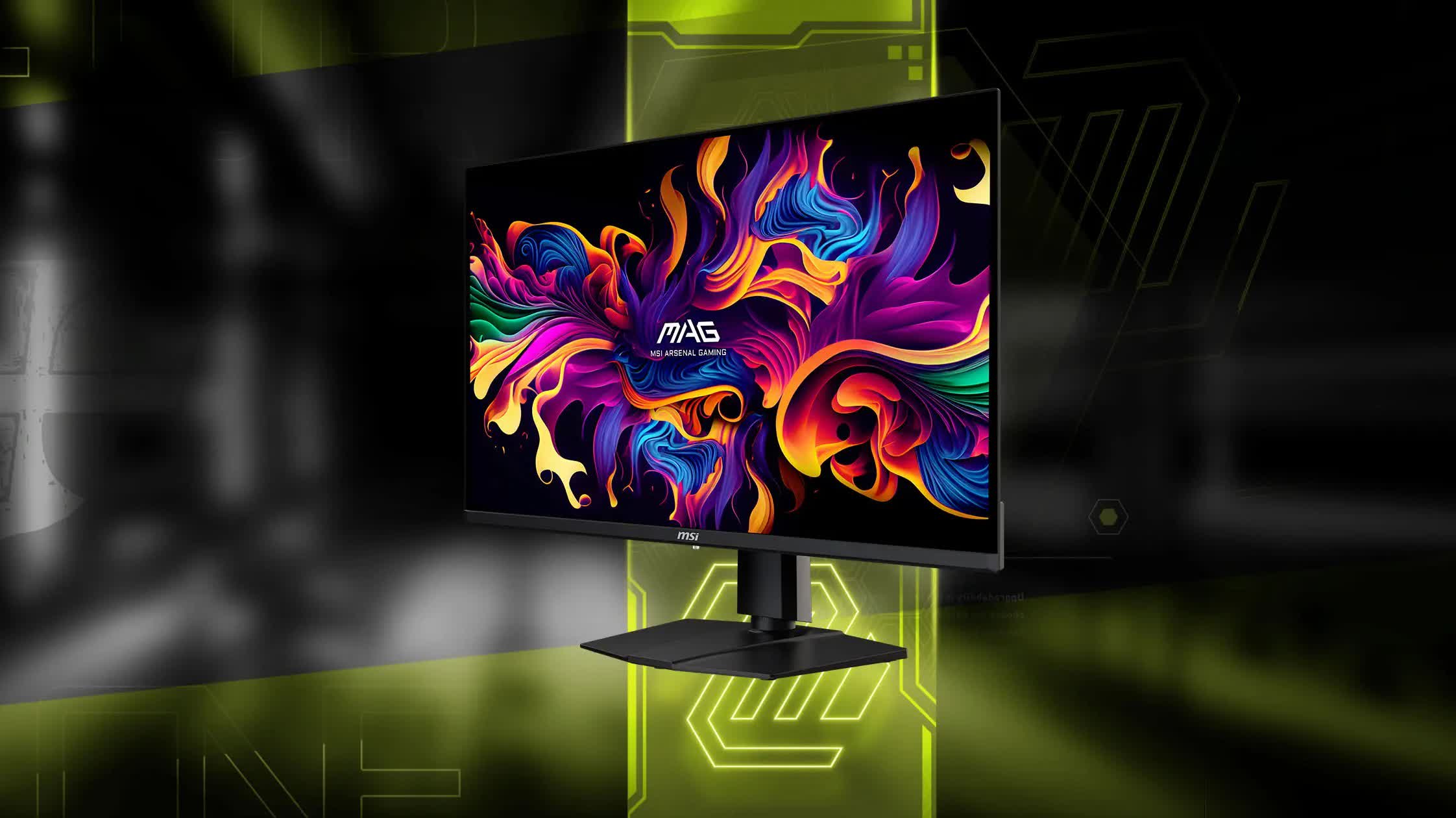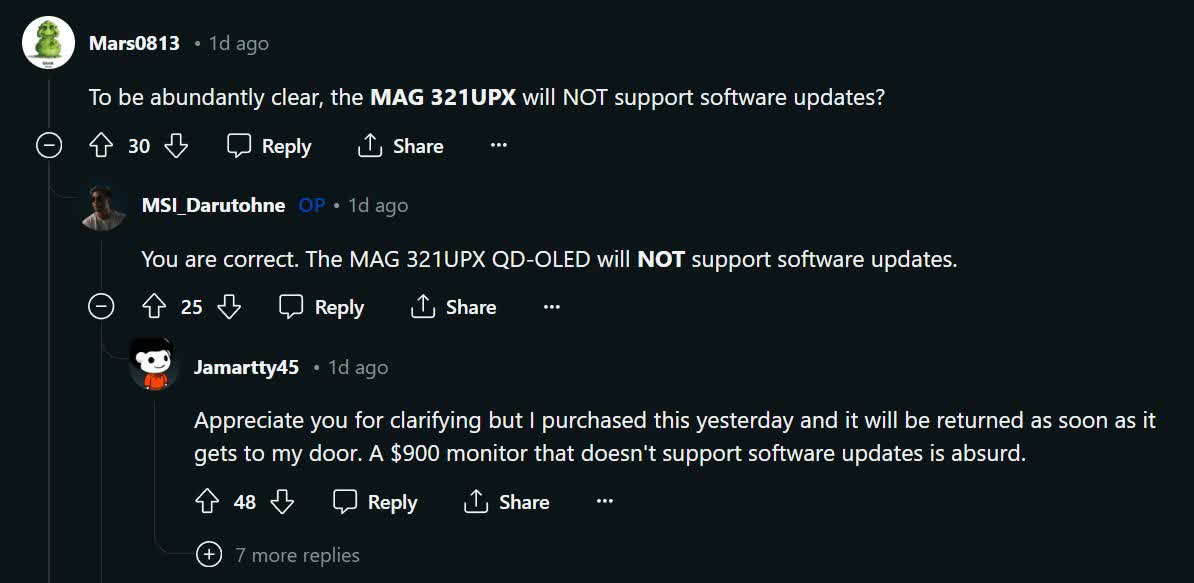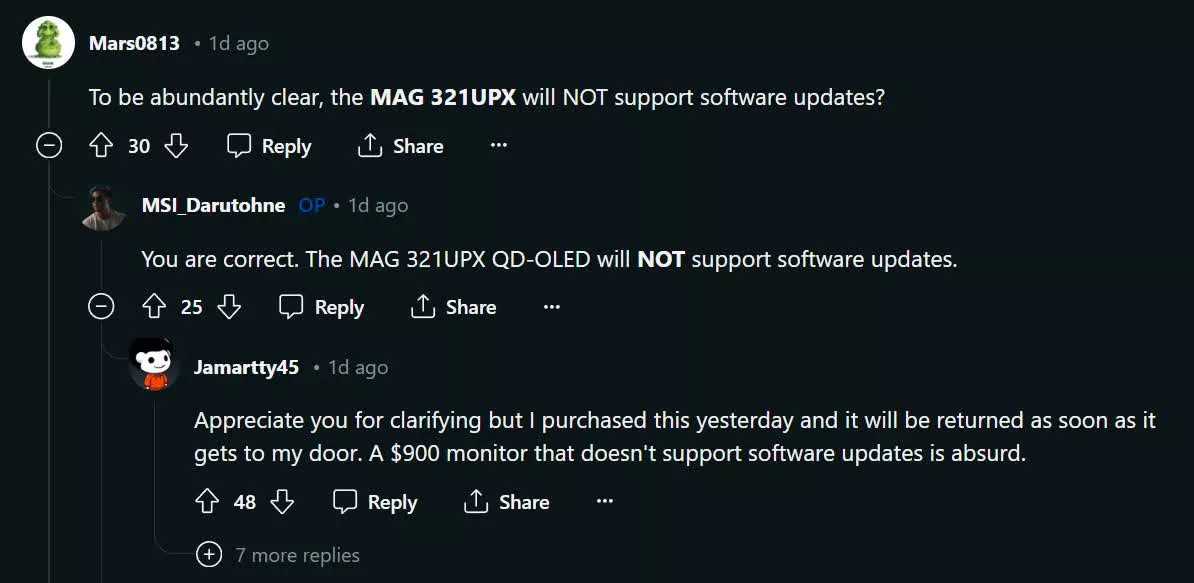Facepalm: A controversial decision to limit firmware updates on some new MSI gaming monitors ticked off enthusiasts. However, casual gamers will likely flock to the display's impressive specs and affordable pricing. The trade-off could be a gamble for a company still cementing its spot in the monitor market.

The gaming community has lashed out at MSI for not providing firmware updates for some models in its new lineup of QD-OLED gaming monitors. The company is preparing to launch MPG and MAG series monitors later this year, but a recent Reddit thread has exposed that not all models will receive support for firmware updates after purchase.
The news came from a pinned post on the OLED_Gaming subreddit from an MSI employee seeking to generate hype for the upcoming monitors. However, one detail raised some red flags: firmware updates through USB-B only support MPG monitors, not MAG models. When questioned further by commenters, the rep confirmed that two of the three MAG monitors – the 27-inch MAG271QPX and 34-inch MAG321UPX priced at $750 and $900, respectively – would not get any firmware updates at all after release.
Potential buyers immediately criticized the decision, saying they would cancel their pre-orders or avoid those models altogether.
"Not even gonna bother with the MAG version, just canceled my order," one disgruntled Redditor wrote.

That said, MSI's upcoming QD-OLED monitors are impressive, especially for the price. They offer vibrant quantum dot OLED panels ranging from 27 to 49 inches. They support many gaming-friendly features, including high refresh rates of up to 360Hz. The MAG screens, in particular, have been promoted as more affordable than rivals like the $1200 Alienware 34 QD-OLED.
However, these monitors will only ever run launch firmware, and the attractive specs matter less to buyers if MSI intends to 'abandon' them after launch. The lack of ongoing support would prove problematic if the initial firmware is buggy.
As a relatively new player in the gaming monitor space, MSI is still building loyalty in such a competitive market. Considering how these monitors significantly undercut the competition, the brand can likely get away with such a faux pas this time.
https://www.techspot.com/news/102011-msi-new-monitors-cause-uproar-reddit-over-firmware.html
